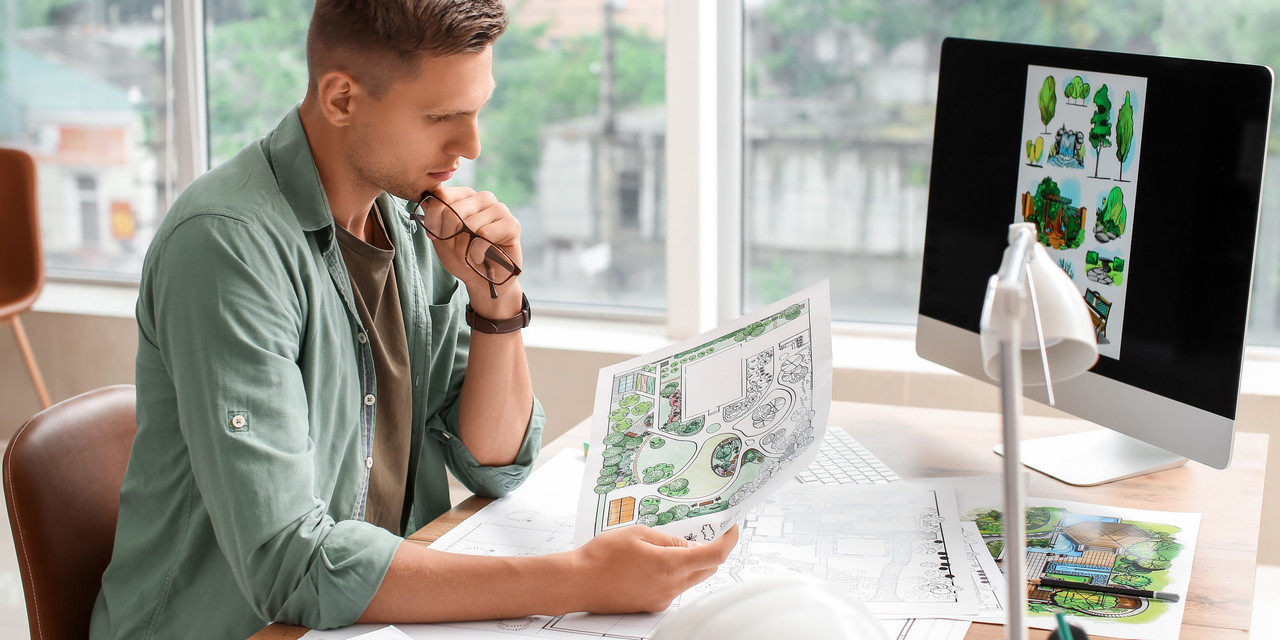Factors To Consider When Hiring A Residential Landscaping Designer
by siteadmin

Before starting a project, you should hire a residential landscaping designer. A designer will have an understanding of your wants and needs and can help you plan the perfect backyard landscape. They will also have experience in designing different types of landscapes, including front yard landscaping, back yard landscaping, and more. Residential landscape designers will also have experience in dealing with the legal and insurance issues that may arise when you install new plants. In addition, residential landscaping designers have experience working with various types of plants and can suggest plants that will thrive in your area.
Landscape Design
Residential landscape design is a multi-faceted process. It involves creating a site inventory, determining needs, developing conceptual design plans, and drawing the final design plan. This process will determine your aesthetic, functional, and horticultural requirements and apply them to your property. The final landscape design plan should reflect these requirements. The process of residential landscape design may also include a consultation with a landscape architect. You may want to see landscape photos online. These photos are snapshots of larger landscape designs that are not just gorgeous but also provide a great place to relax or entertain.
The first step in residential landscape design is developing a master plan. This plan will save time and money. The designer and contractor will work closely together to execute your design. After the design phase is completed, the contractor and designer will test the design and clean up any materials and debris. After completion, the yard will be ready for landscaping. If the project has multiple elements, a landscape architect will work with the homeowners to make sure that each one fits together in harmony.
The process of creating a plan starts with an overview of the entire project area. From there, additional details are added. An outline of the area to be landscaped should clearly show the boundaries of the project area. You should include details such as plant species and types. Additionally, you should also consider the lighting and irrigation needs of your property. This will allow you to get a general idea of what you can do with the space and the money you spend.
Plant Selection
One of the most important aspects of residential landscaping is the selection of plants. This is because plants vary widely in their ability to grow in different sites. If you choose the wrong plants for your home's landscape, you could face high maintenance costs and no plants at all. To avoid such problems, you need to be very particular about the plants you select. Consider the following points when selecting plants for your landscaping project. Read on for tips to ensure that you are choosing the right plants for your home's landscape.
First, determine your needs and the size of your property. Once you know what your needs are, it will be easier to select the right plants for your landscape. Think about size, shape, texture, color, and hydrazones. Choose plants that will grow well in your climate. Moreover, always draw a planting plan to make sure the plants you choose will fit in your property's climate. Make sure you include details on utilities in your plan.
The second factor is light exposure. This refers to the amount of light available in the area designated for planting. You should know how the sun or the shade affects the available light. A plant that receives full sunlight in its young stages could become shaded in later years. You may need to switch plants as the year progresses. Moreover, you should know the light availability in the area where you plan to plant your plants so that you can tailor them to their ideal lighting conditions.
Another factor to consider is the soil type. Often, in new subdivisions, the soil is disturbed and can be compacted or even dry. During this time, most plants will not thrive. Moreover, if your soil is in poor health, you may not be able to grow the plants you want. Fortunately, you can get samples of your soil before you make a decision. You can then decide which plants would thrive on your property.
Maintenance
Commercial properties have different requirements than residential ones when it comes to landscape maintenance. Commercial properties are constantly competing to attract and retain tenants and customers, so an attractive and well-maintained landscape can be a huge draw. There are several factors to consider when choosing a landscaping maintenance service company. Listed below are some of the factors to consider. The company's experience, professionalism, and customer service should all be high on the list. Listed below are some important things to keep in mind when selecting a landscape maintenance company:
Safety
There are numerous things a landscaper should consider to make their landscaping safe. One of the most important safety features is lighting, which allows for comfort during the night. Lighting has several uses and is equally important on both commercial and residential sites. While lighting is necessary to make any space safe, it is also aesthetically appealing. Proper lighting can make any outdoor space look beautiful and provide comfort while working. For more information on how to keep your landscaping safe, check out the resources below.
An article has been published standards for various landscaping activities, including tree trimming, and construction of retaining walls and patios. These standards will provide a comprehensive checklist of potential hazards and the proper procedures and precautions to take during each step. A website also offers downloadable landscaping safety checklists. These checklists will provide a thorough outline of the steps to take to keep employees and the public safe. Once completed, they can serve as a reference to employees, clients, and other stakeholders.
In addition, to curb appeal, landscaping can also increase home security. By increasing visibility, limiting hiding spots, and reducing privacy, homeowners can improve home security. Good landscaping also looks good. A streamlined appearance is more appealing to the eye than an overgrown landscape. Clear views can also serve as a great border. In addition, the use of lighting can deter criminals from entering homes. With proper lighting, homeowners will be able to enjoy their yards in peace year-round.
One way to make your landscaping safer is to make sure your workers are wearing high-visibility clothing to be seen by drivers. Moreover, they should practice safe driving habits to avoid distractions and tunnel vision. Likewise, sharp or dull blades can increase the risk of repetitive stress injuries, cuts, and even amputation. Keeping these safety precautions in mind will reduce the risk of injury and save lives. This is why you should hire a landscaper who is well trained and who is dedicated to safety.
Cost
The cost of residential landscaping can vary greatly, depending on the type of yard you have. It will increase if you have more than one acre of land and will increase if you add features, such as a swimming pool. A professional landscaper should be able to estimate the cost of installing and maintaining an irrigation system and other features. The final cost of residential landscaping will depend on how elaborate of a project you want to be done.
The cost of materials and labor can vary widely, but a typical job can cost anywhere from $3,500 to $30,000, depending on the size of the yard. In addition, you will need to consider overhead costs, such as office rent, advertising, legal fees, telephone and internet bills, an accountant, and other business expenses. You should also factor in the cost of tools to run a landscaping business. Whether you choose to hire a landscape architect is completely up to you, but you should expect to pay at least $2,500 for an average landscaping project.
A professional landscaper will charge between $1,300 and $15,950 for an average residential landscaping project. This includes lawn maintenance and dethatching, which will range anywhere from $100 to $700 for a smaller yard. Commercial landscaping, on the other hand, can cost anywhere from $100,000 to $5,500 for several acres. Despite the wide price range, landscaping is a worthwhile investment. It is also an excellent way to add value to your home and create extra space for your yard.
CATEGORY: Landscaping
TAGS: landscaping services, landscaping guide, landscape designs, landscaping approaches, landscaping techniques
Before starting a project, you should hire a residential landscaping designer. A designer will have an understanding of your wants and needs and can help you plan the perfect backyard landscape. They will also have experience in designing different types of landscapes, including front yard landscaping, back yard landscaping, and more. Residential landscape designers will…
Recent Posts
- Expert Cleaners Lexington: Delivering Excellence in Cleaning Services
- Importance of hiring local marketing agency for your website development
- Don’t Miss Luxury Easter Flower Bouquet, 48H delivery in the USA
- The Importance of Hiring a Local Marketing Agency
- It’s Wednesday, Time to Treat Yourself To Flowers
